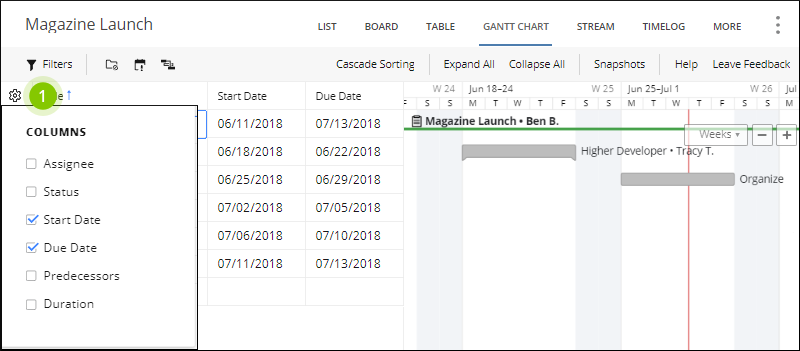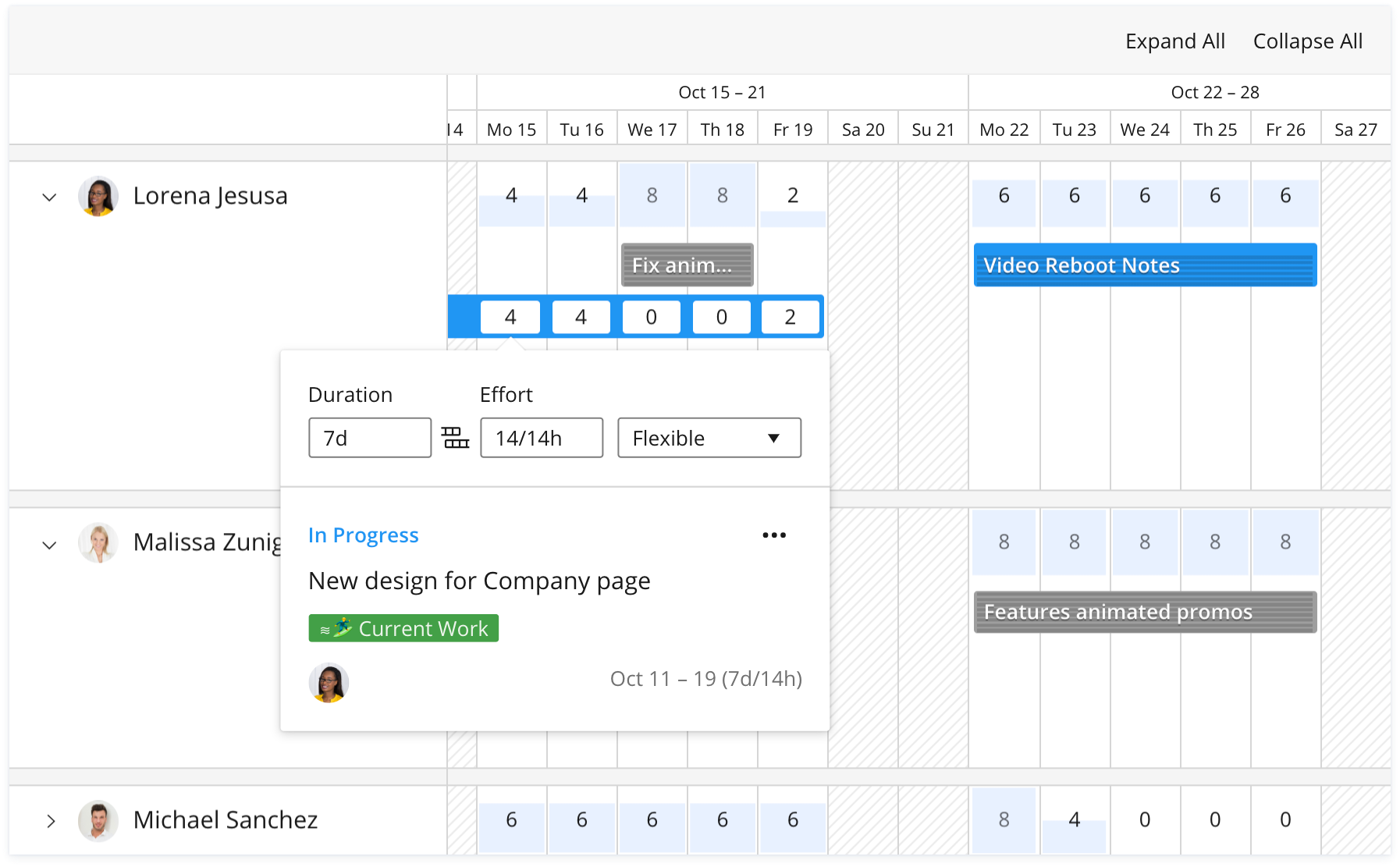Key takeaways:
- What causes project work plans to fail? Key reasons include misaligned vision, unclear communication, unrealistic goals, poorly allocated resources, and disconnected tools.
- How can clear goals improve project success? Clearly defined goals foster buy-in and motivation, leading to better project commitment and management.
- Why is communication crucial in project management? Establishing a coherent communication process reduces frustrations and keeps stakeholders informed, enhancing collaboration.
- What tools can assist in effective project planning? Utilizing centralized management software like Wrike integrates communication and tracks progress, preventing information silos.
- How can resource allocation affect project outcomes? Properly balancing team workloads and resource planning boosts productivity and helps avoid burnout, ensuring project success.
We’ve all been there. You’re trying to kick off a new project work plan but the team’s less than enthusiastic. Kinda brings to mind all those challenging high-school group projects, doesn’t it? Teamwork means somehow getting a cast of characters who all have different ideas, communication styles, and investment in the project to work together and that can be a challenge — whether you’re in high school or the professional world.
The truth is, work projects can be even messier than school ones. In fact, there’s more at stake with poor project performance in the working world than a poor grade. The Project Management Institute reports that 9.9% of every dollar invested is wasted due to poor project planning. On top of that, the Standish Group Chaos Report finds that only 29% of IT projects are successful and 19% are considered utter failures. That sounds like a lot of time — and money — wasted.
With teams collaborating across the globe and between organizations, it’s more crucial than ever to master the project planning process. Having a clear project management work plan saves you loads of time and money by setting your project up for success. But first, it’s helpful to understand where most project work plans fail and how to ensure yours gets an A+.
5 reasons why project work plans fail
1. Misaligned vision and a lack of stakeholder buy-in
According to Forbes, 25% of technology projects fail outright, 20% don’t show a return on investment, and 50% need reworking by the time they’re finished. That’s not a very promising statistic! According to executive leaders, a lack of clear goals accounts for 37% of project failure. Without clear goals, you’ll find that requirements, tasks, and deadlines have nothing to tie them together. If you think about your own projects, aren’t the ones without clear goals or where you aren’t on board with the vision usually the ones that fall off your radar as other, more pressing projects come your way?
If the project you’re leading doesn’t have clear goals and the team can’t see the value, they won’t be invested in moving the project along when it hits a snag — especially if they’re already feeling pessimistic before it starts. Either they won’t know what to do to get the project back on course, or they won’t feel motivated to.
Avoid this pitfall by clearly defining the goals and specific values the project brings
Empower your team by providing them with the full scope of documentation to help them understand each step of the project. Project plans help map out their responsibility, the checkpoints, how they’ll be measured, the end goals, and the value they’ll see upon completion. By painting a clear picture for the team, you can make sure that everyone buys into the vision and understands their commitment from the start. Doing this will also help identify tasks that are out of your scope.
Wondering how to write a project plan? One of the easiest ways to ensure a great project kick-off every time is to use templates. Create a project plan template with tasks, timeline, tools used, deliverables needed, who is assigned to each task, and hard deadlines. Once you have that template, you can duplicate it and adjust it for your next projects. Here are some free examples of simple project plans.

2. No clear communication process
Have you ever been on a team where one person preferred email, one preferred Slack, and another liked to walk over to your desk and weave in updates via a quick chat? Projects fail when managers get stuck in the minutia of tasks and disorganized project communication management. It’s important that your project work plan includes a standard process for communication, setting a rhythm of updates, and a process for requests. Inefficient communication and collaboration are two of the top causes of stress in the workplace. When stakeholders have to dig through pages of emails or constantly ask for updates, they get frustrated, and their motivation dips.
Avoid this pitfall by establishing where, when, and how the team should communicate
Providing your team with efficient and easy-to-use project visibility and management software to help them communicate decreases friction and helps your project succeed. Choose a tool and process that will fulfill all your communication needs, and stick with it throughout the project. This means you’ll have to sit down as you create your project plan outline and consider all the forms of communication you’ll need throughout the entire project.
The most helpful tool is one that integrates with your other tools — like Slack or Salesforce — so communication, collaboration, asset storage, and sharing are fully visible to the entire project group. This will ensure that everyone has access to the resources they need.
3. Unrealistic goals and deadlines
Hitting deadlines is one of the biggest problems faced by project managers. And sharing information across teams isn’t far behind. If you think about projects you’ve worked on, waiting on someone else to complete their tasks or share critical information is one of the biggest bottlenecks. The overall project deadline doesn’t change just because one person missed their task due date. When a project comes to a screeching halt, people are quick to point fingers, become frustrated, and begin to push through less-than-stellar work to make up for lost time.
Avoid this pitfall by plotting out team bandwidth and adding cushion to tasks
The truth is, there will always be speed bumps, so make sure you build padding into tasks so you can accommodate them. When creating your project work plan, map out how the tasks are dependent on one another so that team members know who they need to collaborate with and when.
One way to map out your project and avoid setting unrealistic expectations is by using a Gantt chart. A Gantt chart is an interactive timeline that gives you a complete view of the project’s progress, work scope, and dependencies. This helps you spot potential bottlenecks that can cause operational inefficiencies. Using Kanban or Scrum boards can also help you plan your project by providing a high-level view of team responsibilities.
Setting a Gantt chart up from the beginning will also help your more visual team members see how they personally impact the project timeline. This motivates the team to prioritize their project tasks and complete their pieces on time.

4. Poorly allocated resources and team members
In school group projects, which role did you play? Did you take on all the work yourself? Maybe you agreed to take on certain tasks, but you were overloaded with other projects and dropped the ball.
According to the Project Management Institute’s 2018 survey, 21% of projects fail due to limited or taxed resources, and inadequate resource forecasting accounts for 18% of project failures. Running out of money, time, and bandwidth can easily kill a project. As a project manager, it’s important to consider all the resources you’ll need — including team bandwidth — when building your project work plan. When the workload is optimized, productivity increases. But when it’s not, it can lead to burnout or disengagement.
Avoid this pitfall by balancing employee workloads and plotting out resources needed
The good news is that you can easily avoid these issues by planning resource allocation and mapping workloads out from the beginning. Tools like Wrike Resource can help you visualize the tasks for your project from a team workflow perspective, giving you the visibility and flexibility to balance workloads. When teams are able to manage their tasks, they can meet deadlines, helping to preserve other resources like time and money.

Setting up your project plan to include a resource tracker allows you to identify potential bottlenecks right away. Since 95% of workers report working on more than one team or project concurrently, providing your team with workload visibility helps them prioritize their tasks across projects and communicate their commitments with other project managers or teams. This smooths communication, helps team members minimize interruptions, and gives them more time to focus on productive work.
5. Disconnected tools and lack of flexibility to course correct
Technology often makes our lives so much easier, but when your project work plan includes multiple tools and teams who are used to different processes, it can turn on you quickly. While your project might set sail on a sunny day with the wind at your back, all teams face storms.
One of the most important elements of project management is being able to identify and course-correct when obstacles pop up. If your tools aren’t connected, and the information your team needs isn’t in one place, you won’t be able to see the potential icebergs looming under the surface.
According to McKinsey, employees spend nearly 20% of the workweek searching for and gathering information. When tools aren’t connected, teams waste time trying to dig through email chains and direct messages to get all the details they need. Not only does this eat up valuable time, but it can knock a project completely off course if people don’t get the most updated assets or information.
Avoid this pitfall by having a centralized tool that helps you keep projects on track
Your project plan also should include the tools needed for the project, where you’ll keep project assets, and what tools you’ll be using to monitor or measure success. As an example, Wrike integrates with other tools like Slack, Jira, Salesforce, and Adobe Creative Cloud.
These integrations ensure that everything for the project is in one place. Besides saving time, you can create a centralized location for tracking all tasks and their dependencies. This way, you can see where each task stands and who might need help moving the project along.
Team: Together, everyone achieves more
Crafting a project work plan can feel daunting, especially when you’re the one leading a diverse group to success. A clear work plan outline and an established communication process empower team members and stakeholders to align on a common vision. Defining which tools you’re using from the beginning for communication and goal setting helps everyone know what the expectations are. By avoiding these planning pitfalls and setting your team up for success, you’ll do more than save time and money for the company — you’ll make it!
Check out these posts for further reading:
- What’s the difference between Kanban and Scrum? Find out here.
- Check out these 7 Mission Critical Things to Consider When Building Your Project Plan
- Interested in learning how to write a project work plan? Download our free eBook to learn about the tools that can set your team up for crazy success:




